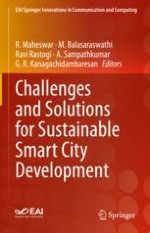
2021 | OriginalPaper | Chapter
Fog and Edge Computing for Automotive Applications
Authors : Sandhya Devi R. Subburaj, V. R. Vijay Kumar, P. Sivakumar, B. Vinoth Kumar, B. Surendiran, A. Neeraja Lakshmi
Published in: Challenges and Solutions for Sustainable Smart City Development
Publisher: Springer International Publishing
Activate our intelligent search to find suitable subject content or patents.
Select sections of text to find matching patents with Artificial Intelligence. powered by
Select sections of text to find additional relevant content using AI-assisted search. powered by